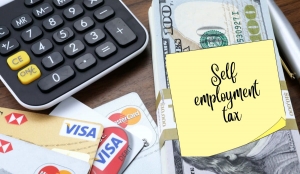please click here :
Introduction to US Customs Clearance
International trade is one of the most dynamic engines of the global economy, and the United States plays a central role in shaping its flow. Every product that enters the country must pass through a detailed process known as US customs clearance. While it may sound like a routine checkpoint, customs clearance is far more than a gatekeeping function. It is a critical compliance step that determines whether goods reach their final destination efficiently or face costly delays.
This article explores every aspect of US customs clearance, from the required documents and compliance procedures to potential pitfalls and strategies for smoother operations. It also provides comparative insights, practical tips, and an FAQ section to address common challenges faced by businesses.
What is US Customs Clearance?
US customs clearance is the process of securing official approval for imported goods to enter the United States. It involves compliance with laws and regulations enforced by the US Customs and Border Protection (CBP) and sometimes other government agencies. The clearance process includes verifying documentation, assessing duties and taxes, inspecting goods, and ensuring compliance with safety, environmental, and trade regulations.
Why US Customs Clearance Matters for Global Trade
-
Ensures legal compliance and prevents penalties
-
Protects consumers from unsafe or counterfeit products
-
Maintains fair competition by enforcing tariffs and trade rules
-
Provides government revenue through duties and taxes
-
Influences supply chain efficiency, directly affecting businesses' bottom lines
Without proper clearance, even high-value or time-sensitive shipments can be delayed, creating ripple effects across supply chains.
Key Documents Required for US Customs Clearance
The success of customs clearance largely depends on accurate documentation. Missing or incorrect paperwork is the most common cause of delays.
Essential Documents Include
-
Commercial Invoice: Provides details about the transaction, including the buyer, seller, goods description, and price.
-
Packing List: Details packaging, weights, and dimensions of goods.
-
Bill of Lading or Airway Bill: Evidence of the contract of carriage.
-
Customs Bond: A financial guarantee that duties, taxes, and penalties will be paid.
-
Entry Manifest (CBP Form 7533) or Entry Summary (CBP Form 3461/7501): Submitted by the importer or customs broker.
-
Certificates or Licenses: Depending on product type, agencies like the FDA, USDA, or EPA may require approval.
The Role of Customs Brokers
Most importers rely on licensed customs brokers to navigate the complexity of US customs clearance. Brokers handle paperwork, communicate with CBP, classify goods under the Harmonized Tariff Schedule (HTS), and arrange duty payments. Using a broker saves time, reduces risk, and ensures compliance.
The US Customs Clearance Process Step by Step
Step 1: Pre-Arrival Preparation
-
Gather and review documentation
-
Verify tariff codes and duty rates
-
Check admissibility requirements
Step 2: Entry Filing
-
Submit entry documentation electronically via the Automated Commercial Environment (ACE)
-
Provide a customs bond
Step 3: CBP Review and Examination
-
CBP reviews documents for compliance
-
Goods may be inspected physically or scanned
Step 4: Duty and Tax Assessment
-
Import duties, tariffs, and fees are calculated
-
Payments must be made before final release
Step 5: Release of Goods
-
Once compliance is verified and payments are made, goods are cleared for entry and transportation within the US
Common Challenges in US Customs Clearance
-
Incorrect Tariff Classification: Misclassification leads to fines or overpayment.
-
Under- or Over-Declared Value: Can cause suspicion or penalties.
-
Insufficient Documentation: Missing licenses or certificates cause delays.
-
Regulatory Holds: Goods may be flagged by agencies like FDA or USDA.
-
Logistical Delays: Inspections or congestion at ports can slow clearance.
Comparing Different Import Scenarios
| Import Scenario | Clearance Complexity | Key Agencies Involved | Typical Risk | Cost Impact |
|---|---|---|---|---|
| Electronics | Moderate | CBP, FCC | Classification errors | Medium |
| Pharmaceuticals | High | CBP, FDA | Regulatory holds | High |
| Food & Beverages | High | CBP, FDA, USDA | Safety inspections | High |
| Apparel & Textiles | Low to Moderate | CBP | Tariff disputes | Medium |
| Automotive Parts | Moderate | CBP, DOT, EPA | Safety and compliance | Medium |
This table highlights that clearance procedures vary significantly depending on the type of product. Businesses must anticipate requirements specific to their industry.
Best Practices for Smooth US Customs Clearance
Work with Experienced Partners
Partner with reliable customs brokers and freight forwarders who understand CBP regulations.
Use Correct HTS Codes
Ensure products are accurately classified to avoid disputes and penalties.
Maintain Compliance Records
Keep organized records for at least five years, as required by US law.
Leverage Technology
Use trade management software to track shipments, file entries, and automate compliance checks.
Stay Updated
US trade laws and tariffs evolve frequently. Monitor CBP updates and trade agreements.
How US Customs Clearance Differs from Other Countries
While many countries follow international trade standards, the US has unique features:
-
Customs Bonds: Required for nearly all commercial imports into the US.
-
Automated Commercial Environment (ACE): A centralized electronic system for filings.
-
Partner Government Agencies: The US often involves multiple agencies, adding complexity.
-
High Penalties: Non-compliance fines are stricter compared to many other countries.
These differences underline the importance of tailored strategies when importing into the US.
The Future of US Customs Clearance
Technology and policy are shaping the future of clearance:
-
Automation and AI: Predictive risk assessments reduce manual checks.
-
Blockchain Applications: Improve transparency and traceability of shipments.
-
Trade Policy Shifts: Tariff adjustments and new trade agreements impact clearance requirements.
-
Sustainability Regulations: More scrutiny on environmental impact of imported goods.
Frequently Asked Questions about US Customs Clearance
1. How long does US customs clearance take?
Clearance can take a few hours to several days, depending on documentation accuracy and whether inspections are required.
2. Do I always need a customs broker?
While not legally required, a broker is strongly recommended due to the complexity of the process.
3. What happens if my goods are held by CBP?
CBP may request additional documents, conduct inspections, or refer goods to another agency for review. Resolution depends on compliance.
4. How are customs duties calculated?
Duties are based on the product classification under the HTS, declared value, country of origin, and applicable trade agreements.
5. Can I reduce customs clearance delays?
Yes. Accurate documentation, correct tariff classification, advance planning, and using experienced brokers all help prevent delays.
Summary
US customs clearance is a critical step in global trade, ensuring compliance, safety, and efficiency. From required documents and customs brokers to industry-specific challenges and best practices, this guide helps importers navigate the process smoothly while avoiding costly delays.






